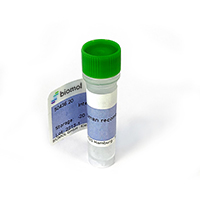Cookie-Einstellungen
Diese Website benutzt Cookies, die für den technischen Betrieb der Website erforderlich sind und stets gesetzt werden. Andere Cookies, die den Komfort bei Benutzung dieser Website erhöhen, der Direktwerbung dienen oder die Interaktion mit anderen Websites und sozialen Netzwerken vereinfachen sollen, werden nur mit Ihrer Zustimmung gesetzt.
Konfiguration
Technisch erforderlich
Diese Cookies sind für die Grundfunktionen des Shops notwendig.
"Alle Cookies ablehnen" Cookie
"Alle Cookies annehmen" Cookie
Ausgewählter Shop
CSRF-Token
Cookie-Einstellungen
FACT-Finder Tracking
Individuelle Preise
Kundenspezifisches Caching
Session
Währungswechsel
Komfortfunktionen
Diese Cookies werden genutzt um das Einkaufserlebnis noch ansprechender zu gestalten, beispielsweise für die Wiedererkennung des Besuchers.
Facebook-Seite in der rechten Blog - Sidebar anzeigen
Merkzettel
Statistik & Tracking
Endgeräteerkennung
Kauf- und Surfverhalten mit Google Tag Manager
Partnerprogramm

| Artikelnummer | Größe | Datenblatt | Manual | SDB | Lieferzeit | Menge | Preis |
|---|---|---|---|---|---|---|---|
| 145720.25 | 25 µg | - | - |
3 - 19 Werktage* |
682,00 €
|
Bei Fragen nutzen Sie gerne unser Kontaktformular.
Bestellen Sie auch per E-Mail: info@biomol.com
Größere Menge gewünscht? Bulk-Anfrage
Bestellen Sie auch per E-Mail: info@biomol.com
Größere Menge gewünscht? Bulk-Anfrage
Placenta growth factor (PlGF or PGF) is a member of the PDGF/VEGF family of growth factors that... mehr
Produktinformationen "PlGF-3, Recombinant, Human, aa19-221 (Placenta Growth Factor, PlGF, PGF)"
Placenta growth factor (PlGF or PGF) is a member of the PDGF/VEGF family of growth factors that share a conserved pattern of eight cysteines (13). Alternative splicing likely results in four human mature PlGF forms containing 131 (PlGF1), 152 (PlGF2), 203 (PlGF3), or 224 (PlGF4) amino acids (aa) (13). The PlGF3 form is limited to humans. PlGF3 and PlGF1 do not contain a heparin binding insert at the Cterminus (1, 2). Within the region shared with other PlGF isoforms (aa18-131), human PlGF3 shares 68%, 66%, 96%, 96%, 87% and 77% aa sequence identity with mouse, rat, porcine, equine, canine and bovine PlGF, respectively. PlGF is mainly found as a variably glycosylated, secreted, 5560kD, disulfide linked homodimer (1, 4). Mammalian cells expressing all forms of PlGF include villous trophoblasts and decidual cells, with smaller amounts in erythroblasts, keratinocytes and some endothelial cells (13, 5, 6). Circulating PlGF increases during pregnancy, reaching a peak in midgestation, this increase is attenuated in preeclampsia (7). However, deletion of PlGF in the mouse, which expresses only PlGF2, does not affect development or reproduction (3, 8). Postnatally, mice lacking PlGF show impaired angiogenesis in response to ischemia (8). PlGF binds and signals through VEGF R1/Flt1 and Neuropilins (some isoforms), but not VEGF R2/Flk1/KDR (3, 810). In contrast, VEGF binds both VEGF R1 and R2, but signals mainly through the angiogenic receptor, VEGF R2. PlGF and VEGF therefore compete for binding to VEGF R1, resulting in a PlGF inhibition of VEGF/VEGF R1 binding coupled to a subsequent promotion of VEGF/VEGF R2mediated angiogenesis (1, 3, 8, 9). However, PlGF (especially PlGF1) and some forms of VEGF can form dimers that can alter the angiogenic effect of VEGF on VEGF R2 (3, 4, 9). PlGF induces monocyte activation, migration, and production of inflammatory cytokines and VEGF (3). These activities facilitate wound and bone fracture healing, and also contribute to inflammation in active sickle cell disease and atherosclerosis (5, 6, 8, 1114). Circulating PlGF often correlates with tumor stage and aggressiveness (3, 14, 15). Source: Recombinant protein corresponding to aa19-221 from human PlGF-3, expressed in Spodoptera frugiperda. Molecular Weight ~29kD, Endotoxin: <0.01EU/1ug (LAL method), Storage and Stability: Lyophilized powder may be stored at -20°C. Stable for 12 months at -20°C. Reconstitute with sterile buffer. Aliquot to avoid repeated freezing and thawing. Store at -20°C. Reconstituted product is stable for 12 months at -20°C. For maximum recovery of product, centrifuge the original vial after thawing and prior to removing the cap. Further dilutions can be made in assay buffer.
| Hersteller: | United States Biological |
| Hersteller-Nr: | 145720 |
Eigenschaften
| Konjugat: | No |
| Format: | Highly Purified |
Datenbank Information
| UniProt ID : | P49763 | Passende Produkte |
Handhabung & Sicherheit
| Lagerung: | -20°C |
| Versand: | +4°C (International: °C) |
Achtung
Nur für Forschungszwecke und Laboruntersuchungen: Nicht für die Anwendung im oder am Menschen!
Nur für Forschungszwecke und Laboruntersuchungen: Nicht für die Anwendung im oder am Menschen!
Hier folgen Informationen zur Produktreferenz.
mehr
Hier kriegen Sie ein Zertifikat
Loggen Sie sich ein oder registrieren Sie sich, um Analysenzertifikate anzufordern.
Bewertungen lesen, schreiben und diskutieren... mehr
Kundenbewertungen für "PlGF-3, Recombinant, Human, aa19-221 (Placenta Growth Factor, PlGF, PGF)"
Bewertung schreiben
Loggen Sie sich ein oder registrieren Sie sich, um eine Produktbewertung abzugeben.
Zuletzt angesehen



